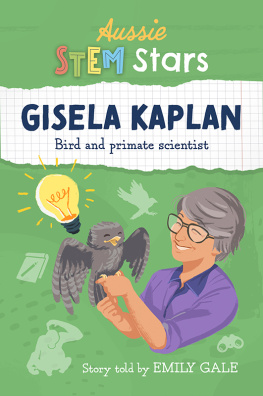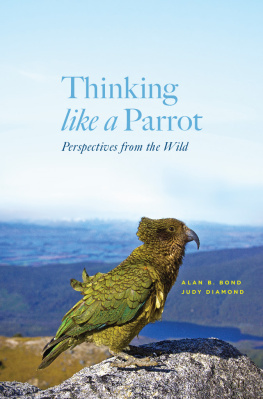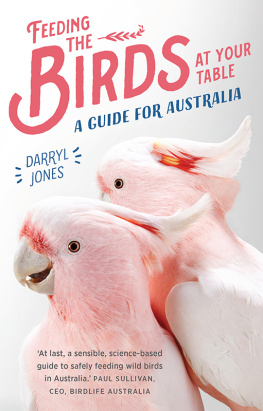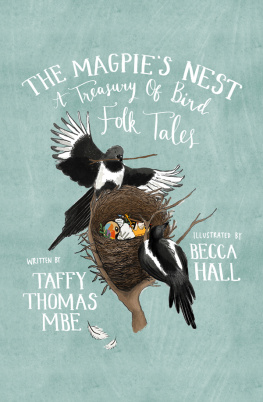SECOND EDITION
AUSTRALIAN
MAGPIE
Biology and Behaviour of an Unusual Songbird
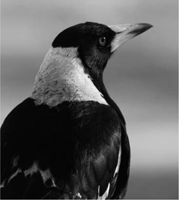
GISELA KAPLAN

Gisela Kaplan 2019
All rights reserved. Except under the conditions described in the Australian Copyright Act 1968 and subsequent amendments, no part of this publication may be reproduced, stored in a retrieval system or transmitted in any form or by any means, electronic, mechanical, photocopying, recording, duplicating or otherwise, without the prior permission of the copyright owner. Contact CSIRO Publishing for all permission requests.
A catalogue record for this book is available from the National Library of Australia.
ISBN: 9781486307241 (pbk.)
ISBN: 9781486307258 (epdf)
ISBN: 9781486307265 (epub)
Published by:
CSIRO Publishing
Locked Bag 10
Clayton South VIC 3169
Australia
Telephone: +61 3 9545 8400
Email:
Website: www.publish.csiro.au
Front cover: Australian Magpie, photo courtesy of Andrew Skeoch, www.listeningearth.com.au
Photographs are by the author unless stated otherwise.
Set in 11/13.5 Adobe Minion Pro & Helvetica Neue LT Std
Edited by Anne Findlay, Princes Hill, Melbourne
Cover design by James Kelly
Typeset by Desktop Concepts Pty Ltd, Melbourne
Index by Bruce Gillespie
Printed in China by Toppan Leefung Printing Limited
CSIRO Publishing publishes and distributes scientific, technical and health science books, magazines and journals from Australia to a worldwide audience and conducts these activities autonomously from the research activities of the Commonwealth Scientific and Industrial Research Organisation (CSIRO). The views expressed in this publication are those of the author(s) and do not necessarily represent those of, and should not be attributed to, the publisher or CSIRO. The copyright owner shall not be liable for technical or other errors or omissions contained herein. The reader/user accepts all risks and responsibility for losses, damages, costs and other consequences resulting directly or indirectly from using this information.
Acknowledgement
CSIRO acknowledges the Traditional Owners of the lands that we live and work on across Australia and pays its respect to Elders past and present. CSIRO recognises that Aboriginal and Torres Strait Islander peoples have made and will continue to make extraordinary contributions to all aspects of Australian life including culture, economy and science.
The paper this book is printed on is in accordance with the standards of the Forest Stewardship Council. The FSC promotes environmentally responsible, socially beneficial and economically viable management of the worlds forests.
Contents
Acknowledgements
A book of this kind would not be possible without the substantial endeavours by researchers and by committed ornithologists. I also wish to extend a general thank-you to the members of the public from most states and territories of Australia who, over the years, have taken the trouble to write to me about their experiences with magpies, and even sent tape recordings. This information has given me a valuable insight into the magpies role in Australias culture and psyche, and alerted me to behaviours that may have been rare or unusual and required explanation. I wish to thank the New England Branch of WIRES for its permission to allow access to some of its local rescue records, and Rebecca Con for preparing WIRES data. A special thanks also to the University of New England Natural History Museum for allowing me free use of its selection of magpie specimens to study anatomical details. The museum is an invaluable resource. My sincere thanks go to Professor Lesley Rogers who has read the entire manuscript of this edition closely and has made many valuable suggestions. My thanks go also to the University of New England for supporting my grant applications, which have allowed me to conduct ongoing field research in magpie behaviour; to Nick Alexander (first edition) and Briana Melideo (second edition), of CSIRO Publishing, and the entire staff at CSIRO for their guidance and conviction in the importance of this project.
Introduction
In our bird-rich nation, the Australian magpie, one of the foremost songbirds in the world, is arguably the most researched and also perhaps the best known native bird. According to the survey conducted by BirdLife Australia in conjunction with Guardian Australia in December 2017, it is now official that the magpie is the most popular bird in Australia.
Indeed, the Australian magpie enjoys the status of a culturally important icon. The kookaburra may signify Australia but the magpie has a special place in the hearts of Australians. This may be so because magpies, unlike kookaburras, are found almost anywhere in this country. They often share suburban backyards and rural properties with human populations. Because magpies are territorial, they tend to stay in the one place for as long as they can hold it and this tends to facilitate contact with humans.
Added to the tremendous general interest in the species, a significant number of people form strong personal attachments to magpies. Sometimes, of course, magpies cause us problems and these too are part of our heritage and interaction, as will be discussed. A magpies life span is thus greater than that of most domestic companion animals and such a stable presence may also bring about close acquaintances with long-term human residents. Most importantly, though, magpies themselves show signs of being amenable to warming to humans as companions (see figure on next page).
For some, it is irresistibly attractive that magpies volunteer to come to the back porch and actually communicate with the inhabitants of the house. Some may even stray into the house on foot and, without any sign of fear, investigate the kitchen and living quarters. Among the nicest stories are those recounting the transfer of the relationship between bird and human to the magpies offspring, thus increasing the number of magpies appearing at the back porch. Friendships with magpies will be discussed in great detail in the last chapter, including why such friendships are possible at all and why the word friendship applies in its inherent meaning of reciprocity.

Magpies take an active interest in their environment and there is little that they seem to miss.
Part of the attraction is that these birds remain free ranging and self-sufficient and yet choose to befriend humans. Their demeanour is often so expressive that people are fascinated and feel they have personal access to the magpies and to their lives, as if being handed a small looking-glass into the natural world which, in turn, often leads to spending more time watching their behaviour.
It is not uncommon that those who claim to have no particular knowledge of birds often become very good naturalists and ethologists in the process of these evolving friendships with magpies. There may be some unusual magpie behaviour that this book cannot readily explain, especially when the observed behaviour is rare and concerns very specific moments. However, this does not invalidate anecdotal observations. On the contrary, over the last century, the many very active ornithological clubs and naturalists in Australia have been studious in recording their observations in print. Thus, details of magpie behaviour have accumulated and substantially contributed to maintaining and spawning research interest in magpies.
Next page

